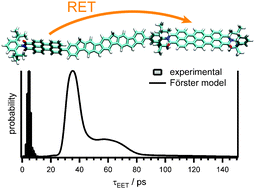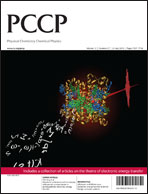Superexchange-mediated electronic energy transfer in a model dyad
Abstract
On the basis of time-dependent density functional theory (TD-DFT) calculations coupled to the polarizable continuum model (

- This article is part of the themed collection: Electronic energy transfer

 Please wait while we load your content...
Please wait while we load your content...